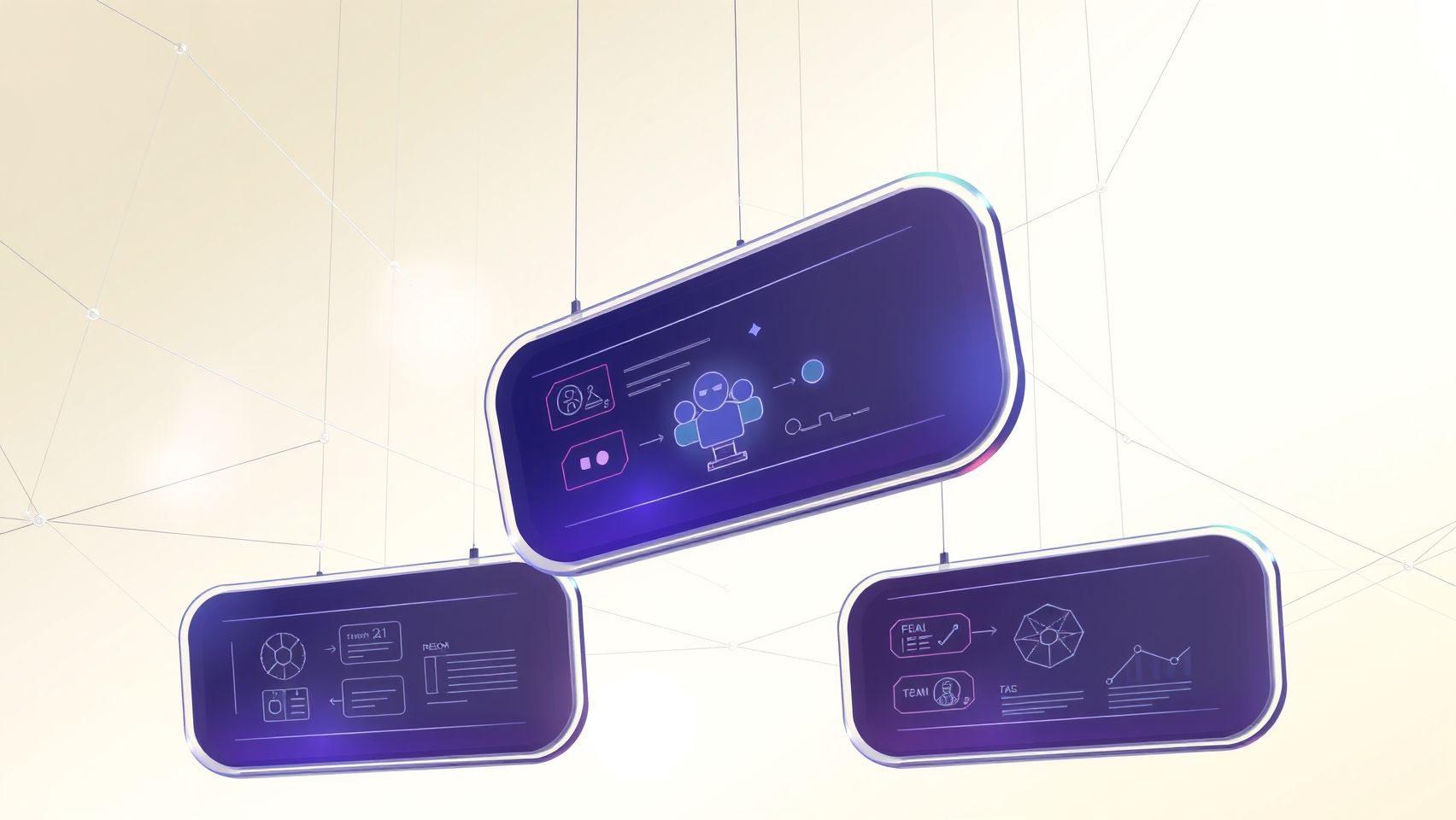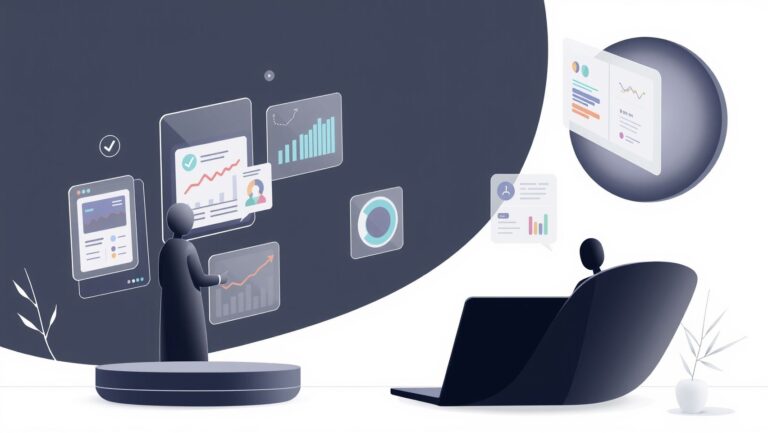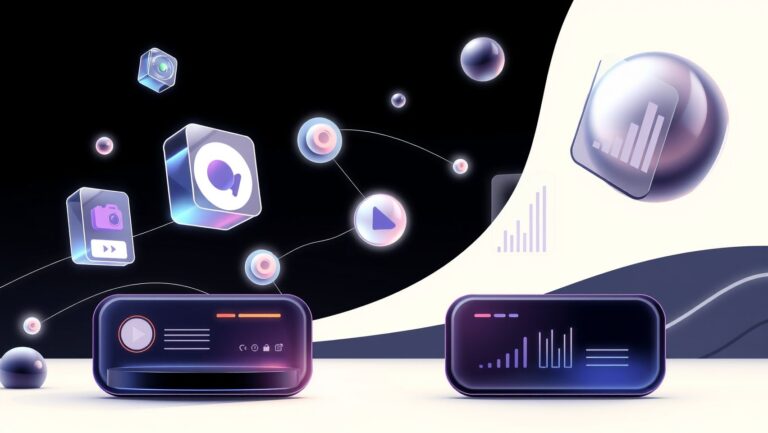How to Use Gemini 2.5 Flash AI for Effective E-Learning Content Creation
Are you looking for a faster, more cost-effective way to develop engaging e-learning courses? Artificial Intelligence is revolutionizing education content, enabling creators to produce high-quality materials with unprecedented speed and precision. Among the leading innovations is Gemini 2.5 Flash AI, a cutting-edge model developed by Google that excels in reasoning and generating dynamic content. This powerful tool can assist educators and content developers in crafting interactive lessons, quizzes, and multimedia experiences in less time, ultimately boosting student engagement and learning outcomes.
Recent industry reports highlight that AI-driven platforms are transforming e-learning by offering tailored and immersive experiences. With Gemini 2.5 Flash, users gain access to an intuitive AI that not only accelerates content creation but also enhances the quality and relevance of the materials produced. Whether you’re looking to turn research into interactive web pages or generate multimedia-rich courses, understanding how to leverage Gemini’s capabilities can give you a significant edge. Stay tuned—we’ll guide you through actionable steps to harness this innovative technology effectively and elevate your online teaching game to new heights.
Insights from Recent AI Advancements for E-Learning

As artificial intelligence continues to revolutionize e-learning, recent advancements highlight the significant potential of high-performance models like Gemini 2.5 Flash. Cutting-edge research and industry reports demonstrate that these models can achieve up to 70% cost reductions compared to traditional content development methods, making high-quality AI-driven content more accessible and economically feasible for educational institutions and content creators.
Gemini 2.5 Flash models excel in handling extensive contextual data, supporting over 1 million tokens within a single session. This capacity enables the development of complex, detailed, and cohesive learning modules, which are increasingly critical for advanced e-learning environments that require deep reasoning and nuanced understanding. The ability to process such large amounts of data allows educators and developers to craft more thorough and interconnected educational experiences without the limitations of smaller models.
Recent Developments and Performance Gains
Recent updates to Gemini 2.5 models reveal impressive performance improvements including response times that are 25-90% faster, significantly enhancing user engagement and efficiency. These enhancements facilitate real-time interactions vital for engaging online courses. Additionally, the models demonstrate up to 90% accuracy in enterprise data analysis tasks, making them invaluable for personalized learning analytics and adaptive content customization.
Key industry tools such as Google Vertex AI, Gemini models, Google Gen AI SDK, and LaoZhang.AI play essential roles in streamlining diverse content creation activities. These platforms enable rapid development, deployment, and management of sophisticated AI-driven learning systems, addressing major pain points such as AI cost management, multi-task workflow integration, and complex reasoning deployment.
Practical Applications and Industry Impact
Real-world case studies underscore the transformative impact of Gemini 2.5 Flash in e-learning. For example, Rivian’s integration of Google Workspace with Gemini AI fosters faster communication and collaboration, illustrating how large context support and high efficiency translate into tangible educational benefits. Such advancements facilitate more dynamic, personalized, and scalable educational content, ultimately leading to more effective learning outcomes.
Overall, the latest research emphasizes that leveraging Gemini 2.5 Flash’s capabilities—particularly its cost efficiency, large context handling, and speed—can substantially elevate the quality and effectiveness of e-learning content creation, empowering educators to deliver richer and more engaging educational experiences.
Step-by-Step Guide to Integrate Gemini 2.5 Flash into Your E-Learning Workflow

Harnessing the power of Gemini 2.5 Flash AI can significantly enhance your e-learning content by generating personalized, engaging, and accurate educational materials. To effectively deploy this model, a clear setup and integration process is essential. This guide walks you through the practical steps, from initial account creation to content generation, ensuring you maximize the potential of Gemini 2.5 Flash for your courses.
1. Create a Google Cloud Platform Account and Enable Vertex AI
Begin by signing up for a Google Cloud Platform (GCP) account if you haven’t already. Once registered, navigate to the Google Cloud Console and enable the Vertex AI services, which provide the infrastructure for Gemini 2.5 Flash. Note that API access costs approximately $0.10 per hour, so monitoring usage is advisable to manage expenses effectively. Google’s official documentation offers comprehensive steps for account setup and enabling required APIs.
2. Access Gemini 2.5 Flash via Google Gen AI SDK
To interface with Gemini 2.5 Flash, install the Google Generative AI SDK using pip:
pip install google-genai-sdkThis SDK simplifies API calls and streamlines integration. After installation, you can develop scripts to interact with the model programmatically.
3. Configure API Credentials Securely
Generating a service account key in GCP is crucial for secure API access. Download the JSON credentials file and set the environment variable or configure your SDK to use these credentials. Proper credential management ensures your API keys are protected and prevents unauthorized access.
4. Set Up Prompt Templates for Educational Content
Effective use of Gemini 2.5 Flash depends on designing optimized prompt templates. For e-learning, prompts should be tailored to generate quiz questions, explanations, summaries, or interactive dialogues. Experiment with prompt wording to improve clarity and specificity, then fine-tune responses based on feedback to enhance accuracy and engagement.
5. Generate and Fine-Tune Course Material
Use the SDK to send prompts to Gemini 2.5 Flash, receiving generated content in response. For example, request quiz questions by prompting the model with a subject topic. Review responses and adjust prompt phrasing as needed. Iterative testing helps refine output quality, ensuring the content aligns with your educational goals.
6. Implement Version Control and Testing
Maintain transparency by version-controlling prompt templates and generated outputs. Conduct iterative testing sessions to assess content quality and relevance. Incorporate feedback from learners or educators to fine-tune prompts and improve overall material effectiveness. This ongoing process ensures your e-learning content remains current, engaging, and aligned with educational standards.
Leveraging AI Tools and Platforms for Optimal Content Generation

In the rapidly evolving landscape of e-learning, leveraging advanced AI tools is crucial for creating engaging and scalable course content. Google Vertex AI stands out as a comprehensive platform supporting the deployment of models like Gemini 2.5 Flash, particularly suited for large-scale content development. This platform enables scalable deployment, reducing costs dramatically while maintaining high accuracy—Google’s models have demonstrated up to an 85% lower cost usage compared to traditional methods, making it an efficient choice for educational institutions and content creators aiming for economies of scale.
The Google Gen AI SDK further enhances this ecosystem by offering seamless integration and robust prompt management. This flexibility allows developers to customize prompts easily, optimizing the AI’s performance for specific educational content, whether text, images, or videos. Additionally, LaoZhang.AI caters to specialized industry needs through tailored tuning options, ensuring that AI solutions align closely with niche content requirements and industry standards, further boosting the effectiveness of e-learning applications.
Tools, Platforms, and Models: A Comparative Overview
Here’s a comparison of key AI solutions used in e-learning content creation:
Pros and Cons: Cloud-Based Models vs. Local Deployment
Designing Effective Instructional Objectives and Assessment with Gemini AI

Harnessing Gemini 2.5 Flash AI to craft precise learning objectives and dynamic assessments is transforming e-learning. By leveraging its advanced reasoning capabilities, educators can generate clear, measurable objectives aligned with curriculum goals, ensuring that course outcomes are explicit and achievable.
AI-driven assessment creation becomes more streamlined by feeding course content and desired learning outcomes into Gemini. It can generate scenario-based questions, true/false items, multiple-choice prompts, and open-ended tasks that are tailored to specific cognitive levels, such as those defined by Bloom’s taxonomy. This targeted approach ensures assessments accurately measure learners’ understanding and skills, making evaluation both meaningful and efficient.
Creating Measurable Learning Objectives
Using Gemini, instructors can prompt the AI to produce specific, measurable objectives by specifying broad curriculum goals. For example, prompting with, “Generate measurable objectives for a course on digital marketing focusing on SEO” results in outcomes that specify skills like analyzing keywords, creating backlinks, or optimizing content. Refining prompts with cognitive level indicators (e.g., “at the application level”) helps produce sharper, action-oriented objectives that guide instruction and assessment design.
Building Adaptive and Engaging Assessments
Feed the course content and targeted learning outcomes into Gemini to generate varied question types that adapt to different learner levels. The AI can produce scenario-based case studies for higher-order thinking, true/false for quick checks, multiple-choice questions with distractors informed by common misconceptions, and open-ended prompts for critical reflection. Immediate AI analysis of responses can provide instant feedback, fostering a responsive learning environment where students understand their strengths and areas for improvement in real-time.
Prompt engineering is key to overcoming common issues such as vague outputs or irrelevant questions. Adjust prompts iteratively, specifying desired question types, cognitive levels, and content scope. Including explicit instructions, such as “Generate a scenario-based question for advanced learners,” results in more targeted and useful assessments.
Recent developments highlight Gemini’s ability to reason through its responses, making the generated objectives and questions more accurate and aligned with curriculum standards. This consistency enhances the reliability of AI-generated content, saving educators time and ensuring assessment relevance across diverse e-learning scenarios.
Integrating Gemini AI-Generated Content into Your LMS

With the advancements in Gemini 2.5 Flash AI, educators and content developers now have powerful tools to create dynamic e-learning materials. Seamless integration of AI-generated content into popular LMS platforms like Moodle, Canvas, or TalentLMS can significantly enhance the learning experience. This section provides practical, step-by-step methods to embed and automate AI-driven modules effectively.
Exporting Content as SCORM, PDFs, or API Integration
One of the most straightforward methods to embed AI-created learning materials is through exporting content as SCORM packages. These packages ensure compatibility across most LMS platforms, allowing for easy import and management. The cost for SCORM hosting varies depending on your platform, but it remains a reliable means to deliver structured courses. Additionally, Gemini 2.5 Flash AI offers the ability to generate PDFs for static materials or multimedia content which can be uploaded directly into your LMS. For real-time updates and more interactive content, leveraging APIs is highly effective.
Using the Gemini API, educators can embed quizzes, modules, and interactive lessons directly into LMS pages through embedded iframes or API calls. This not only streamlines content updates but also allows for high levels of customization based on learner progress and preferences.
Automating Content Updates with Workflow Automation Tools
To maintain fresh and relevant learning materials, schedule AI content generation workflows using automation tools like Zapier or Integromat. These platforms enable you to set triggers for generating or updating content at specified intervals—triggered by course completion, user feedback, or time-based schedules. For instance, an instructor can automate the generation of new quizzes or supplementary readings whenever a new module is published, ensuring your LMS always runs with up-to-date materials.
Addressing Common Integration Challenges
While integrating AI content, educators often face challenges such as format compatibility and data security. To overcome this, it is recommended to implement content validation pipelines that check exported files for consistency and compatibility before deployment. Ensure that all SCORM packages adhere to standards and that PDFs are optimized for web use. Regarding security, employing secure API protocols and encrypting sensitive data in transit safeguards learner information and content integrity.
Testing and Validation
Before full deployment, rigorously test each AI-generated module within your LMS environment. Validate that SCORM packages load correctly, quizzes function as intended, and embedded content appears seamlessly across devices. This process minimizes post-deployment issues and guarantees a smooth learning experience for users.
By systematically employing these methods, educators and developers can harness the full potential of Gemini 2.5 Flash AI—creating, embedding, and updating engaging e-learning content efficiently and securely across various LMS platforms.
Strategies to Maximize Engagement and Learning Outcomes Using Gemini AI

Integrating AI-driven tools like Gemini 2.5 Flash into e-learning can significantly boost learner engagement and retention. Recent industry research indicates that AI-driven personalization and interactive assessments can increase engagement by up to 40%, transforming passive learning into active, personalized experiences. By leveraging these technologies effectively, educators can create dynamic, motivational content that adapts to individual learner needs and promotes deeper understanding.
Implementing Personalized Content with AI
Use Gemini 2.5 Flash’s reasoning capabilities to analyze learner performance data and generate customized learning paths. For example, based on quiz results or interaction patterns, the AI can suggest targeted modules or adaptive challenges, ensuring learners focus on areas needing improvement. This tailored approach increases relevance and motivation, leading to higher completion rates. Modern platforms such as TalentLMS support seamless deployment of these personalized experiences supported by AI analytics. Incorporating continuous data analysis allows educators to refine these pathways dynamically, ensuring optimal engagement.
Gamification and Interactive Feedback
Enhance motivation with gamified elements like badges, points, and leaderboards integrated with Gemini AI’s real-time feedback. For instance, learners can earn badges for mastering specific skills, while leaderboards foster friendly competition. AI provides instant, personalized feedback on performance, guiding learners through challenges and highlighting progress—crucial for maintaining motivation and reducing dropout rates. Additionally, AI can generate scenario-based and branching questions dynamically, promoting active learning by simulating real-world decision-making contexts and encouraging learners to apply their knowledge practically.
Incorporating Multimedia Content for Richer Learning
Leverage AI to curate or generate multimedia content—such as images, videos, and interactive simulations—that aligns with learning objectives and learner preferences. Gemini 2.5 Flash’s capabilities can be used to produce tailored multimedia elements that reinforce key concepts, making lessons more engaging and easier to remember. For example, AI-curated visual aids or videos can simplify complex topics, boosting comprehension and retention. This multimedia integration creates a more immersive learning environment, which recent data suggests improves engagement and understanding by providing varied stimuli tailored to individual learning styles.
Ongoing Analysis and Optimization
Assessment of engagement metrics via platforms like Learning Locker enables continuous refinement of prompts and content. Using AI analytics, educators can identify patterns, pinpoint areas where learners struggle, and adjust the content or difficulty levels accordingly. This iterative process ensures that the e-learning experience remains vibrant and effective, adapting to evolving learner needs and maximizing positive outcomes.
Conclusion
Embracing Gemini 2.5 Flash AI in your e-learning content creation process unlocks remarkable opportunities to reduce costs, speed up development, and boost learner engagement through personalized, high-quality materials. As AI-driven technologies continue to shape the future of education, integrating tools like Gemini 2.5 Flash and Google Vertex AI can position your courses ahead of the curve, delivering tailored experiences that resonate with diverse learners.
By following practical steps— from initial setup to seamless LMS integration— you can achieve smooth implementation and measurable improvements in your training programs. Recent trends show a rising adoption of AI in education, with over 60% of teachers already leveraging these innovations to enhance their teaching and students’ learning outcomes. Don’t wait to harness this transformative potential.
Start experimenting with Google Vertex AI and Gemini 2.5 Flash today. Set up a free trial, create your first educational prompt, and witness firsthand how AI can revolutionize your course development process. Take confident steps now— the future of e-learning is within your reach. Let AI elevate your educational impact and inspire your learners to thrive!






